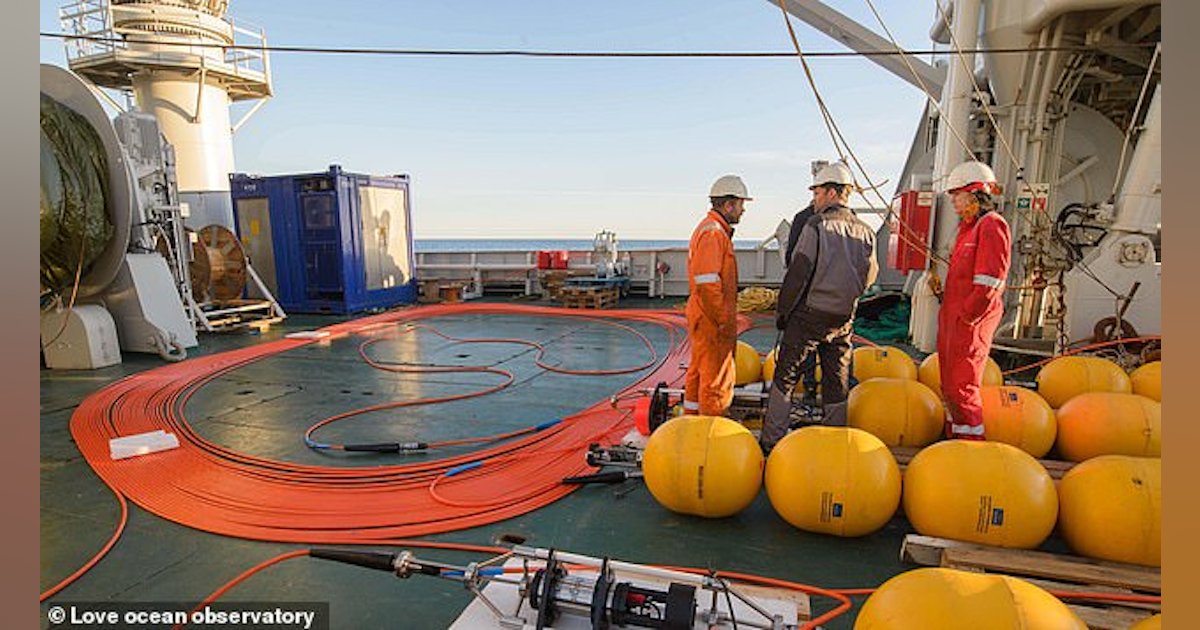
Norwegian cable network of undersea sensors able to detect submarines found disabled after cables were cut
An unmanned submarine traced the cause to Node 2, a surveillance platform 820 feet underwater that was dragged away from its normal location.
Oslo – A Norwegian undersea surveillance network that is capable of detecting submarines has had its cables mysteriously cut. The Daily Mail reports. Continue reading original article
The Military & Aerospace Electronics take:
22 Nov. 2021 — Police were called in to investigate amid suspicion Russia could have ‘sabotaged’ the undersea sensors, which predominantly monitor fish but can pick up the movement of submarines.
The cables were cut and then disappeared, with the Institute of Marine Research describing ‘extensive damage’ to the outer area of the Lofoten-Vesterålen (LoVe) Ocean Observatory.
LoVe consists of a network of undersea cables and sensors located on the Norwegian Continental Shelf, an area of strategic interest for both Norway and Russia. LoVe, which was only declared fully operational in August 2020, has been offline since the outage in April.
Related: Leidos gets Navy go-ahead to fabricate TRAPS deep-ocean sonar system prototypes for anti-submarine warfare (ASW)
Related: Teledyne Brown to build and upgrade undersea glider UUVs to gather data for anti-submarine warfare (ASW)
Related: Lockheed Martin eyes Integrated Common Processor (ICP) for bistatic sonar and anti-submarine warfare (ASW)
John Keller, chief editor
Military & Aerospace Electronics
Oslo – A Norwegian undersea surveillance network that is capable of detecting submarines has had its cables mysteriously cut. The Daily Mail reports. Continue reading original article
The Military & Aerospace Electronics take:
22 Nov. 2021 — Police were called in to investigate amid suspicion Russia could have ‘sabotaged’ the undersea sensors, which predominantly monitor fish but can pick up the movement of submarines.
The cables were cut and then disappeared, with the Institute of Marine Research describing ‘extensive damage’ to the outer area of the Lofoten-Vesterålen (LoVe) Ocean Observatory.
LoVe consists of a network of undersea cables and sensors located on the Norwegian Continental Shelf, an area of strategic interest for both Norway and Russia. LoVe, which was only declared fully operational in August 2020, has been offline since the outage in April.
Related: Leidos gets Navy go-ahead to fabricate TRAPS deep-ocean sonar system prototypes for anti-submarine warfare (ASW)
Related: Teledyne Brown to build and upgrade undersea glider UUVs to gather data for anti-submarine warfare (ASW)
Related: Lockheed Martin eyes Integrated Common Processor (ICP) for bistatic sonar and anti-submarine warfare (ASW)
John Keller, chief editor
Military & Aerospace Electronics
www.militaryaerospace.com



